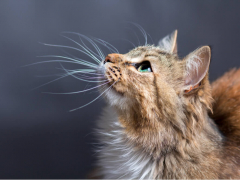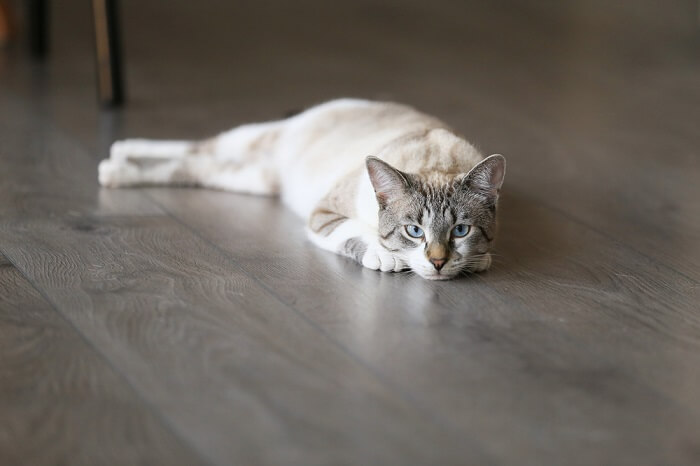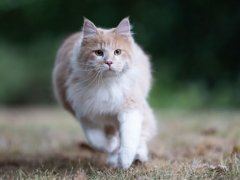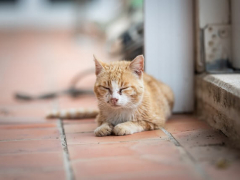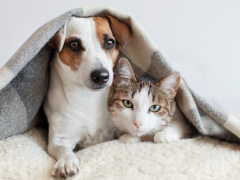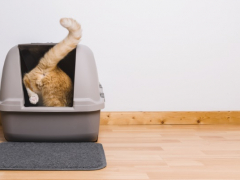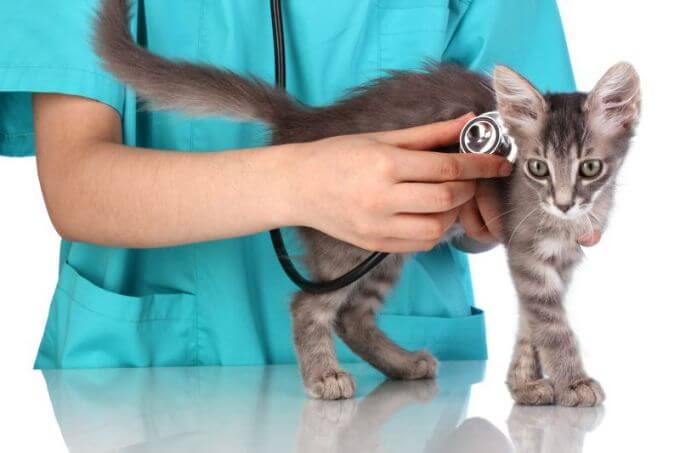
Fading kitten syndrome (FKS) is a condition that anyone who has bred kittens will be aware of. However, it is not a specific illness in the usual sense. Rather, there are a number of different conditions that can each result in a similar pattern of signs of illness in kittens.
In general, FKS describes any situation where one or more kittens in a litter between birth and three months of age falls ill or dies. The first week of life is the main period of concern, and the period up to weaning (at around 3-4 weeks of age) is the second most critical time. An entire litter of kittens may be affected.
Causes of Fading Kitten Syndrome
Fading kitten syndrome has many possible causes, including:
- Maternal issues: There are a number of ways that the mother can contribute to a kitten “fading,” including dystocia (difficult birth), poor milk supply, poor mothering ability or direct trauma by a mother to her kittens.
- Congenital defects: Some kittens are born with anatomical anomalies that are incompatible with normal life. This includes cleft palates, internal hernias, heart defects, internal metabolic disorders and abnormalities of the immune system. Kittens may seem initially normal.
- Environmental issues: If the surrounding conditions of young kittens are not ideal, this can lead to poor health that results in fading. Temperature (too high or too low), excessive humidity, too much stress (e.g. over-handling of kittens by owners or visitors, or too much noise), are all possible environmental factors.
- Nutritional issues: If kittens are not fed correctly, malnutrition can lead to low blood glucose, weakness, hypothermia, and ultimately, fading.
- Viral infections: Young kittens are often protected from common viral infections by antibodies from their mother’s milk. However, if the mother is unvaccinated, or as maternally-derived antibody levels in their bloodstream drop over time, they may become unprotected until they are vaccinated. A wide number of viral infections can affect a litter of kittens, causing them to “fade” around the same time. Examples include cat flu (herpes virus and calicivirus), feline panleukopenia, feline coronavirus, and feline leukemia virus.
- Bacterial infections: A number of bacterial infections can affect litters of kittens. These include respiratory infections, such as Bordetella bronchiseptica, mycoplasma, Pasteurella, and Streptococcus and gastrointestinal infections such as E Coli, Campylobacter, Enterococcus, and Clostridia, along with a number of other systemic infections that can cause generalized sepsis. Good hygiene in the home, especially in the kittening area and den, are the best way to prevent such problems.
- Parasites: Kittens are commonly infected with roundworms (Toxocara) at birth, or soon after, via their mother’s milk, and these can gather both in the intestines, as well as in the lungs, causing serious illness. A serious flea infestation can suck enough blood from kittens to cause anemia, which can also present as fading kitten syndrome. Other parasites such as protozoa (e.g. Giardia, Toxoplasmosis or Coccidia) can also cause serious illness in a litter of kittens, again presenting as fading kitten syndrome.
- Neonatal isoerythrolysis: This issue relates to the parental blood type. The condition can develop when a blood type A male cat is mated with a blood type B queen. The queen’s colostrum (first milk) will contain high levels of anti-A antibodies, and some of the kittens will have type A blood inherited via their father. When a type A kitten sucks, it will absorb the anti-A antibodies from the queen’s milk, and these will attack the kitten’s blood cells, causing haemolytic anemia.
Symptoms of Fading Kitten Syndrome
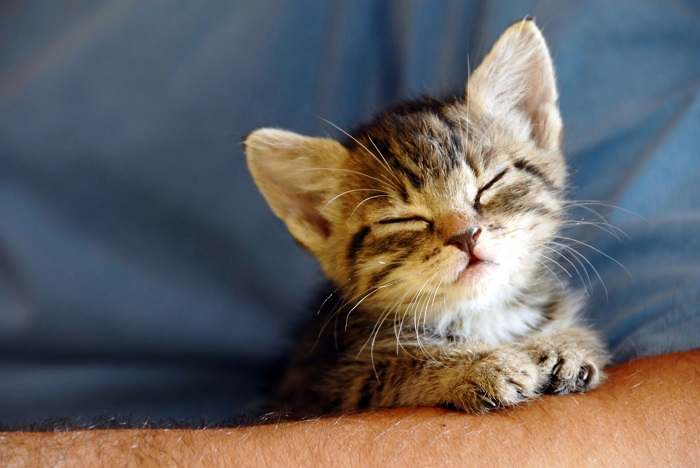
Kittens with FKS are often cold and weak. They may cry or mew or show difficulty in breathing.
The symptoms of FKS may vary depending on the underlying cause. However, regardless of the primary underlying cause, the general process of fading has common characteristics.
These include:
- Falling body temperature (<99F or <37.2C)
- Low blood glucose level due to lack of feeding
- General weakness, lethargy, unresponsive
- Vocalizing – fading kittens may vocalize abnormally, crying or mewing in an unusual way.
- Difficulty breathing or breathing with exaggerated gasps
These symptoms progress to a lack of consciousness. Unless successful intervention takes place, the fading process concludes in the death of the kittens. Identifying the early signs that this syndrome is developing is important so that prompt action can be taken.
Diagnosis of Fading Kitten Syndrome
A veterinarian will make a presumptive diagnosis of fading kitten syndrome based on an examination of the kitten alongside its history.
As with any illness, it’s necessary to carry out an investigation to make a specific diagnosis. This can involve a DVM veterinarian gathering a detailed history from the cat carer, carrying out careful physical examinations of affected kittens to identify common causes, taking samples for laboratory analysis (eg. blood, urine, feces), and ultimately, perhaps carrying out autopsies of kittens that have died.
Treatments for Fading Kitten Syndrome
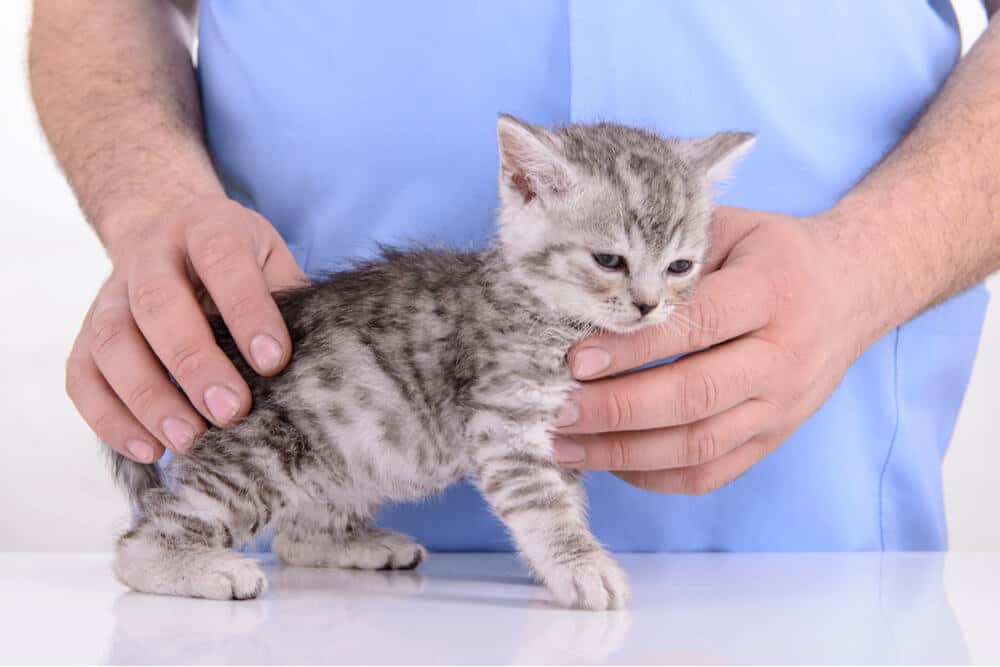
Treating fading kitten syndrome requires a combination of general supportive treatment and specific treatment of the syndrome’s underlying cause.
If the specific cause of fading kitten syndrome can be identified, then specific treatment can be given (e.g. antibiotics for a bacterial infection, anti-parasite medication for worms or fleas, etc). However as well as this, there are general supportive treatments that are likely to be needed for all cases of fading kitten syndrome.
Nutrition
Newborn kittens have very low body reserves to supply them with the energy that they need, so ongoing nutrition is essential, to avoid hypoglycemia (low blood sugar). Cat carers should ensure that queens have a plentiful milk supply, and that kittens are successfully latching on and suckling, resulting in plump, full abdomens.
If there are issues in this area, supplementary feeding should be given using kitten milk formulas or feeding solutions that include dextrose. Fading kittens should be supplemented in this way if there are any suspicions that poor nutrition is an issue. The application of karo syrup to the gums is a simple way of rapidly boosting blood sugar levels in a fading kitten.
Hydration
Dehydration leads to weakness and dullness, and can contribute to fading kitten syndrome, so efforts should be made to ensure that all affected kittens are well hydrated. As well as ensuring that they are drinking plenty of milk, supplementary rehydrating fluids may be offered via a bottle or, under veterinary supervision, by tube feeding.
Warmth
A low body temperature is a key part of fading kitten syndrome. It’s critically important to keep neonatal kittens warm, so extra warmth (e.g. by using heating pads and infra-red lights) is essential in the kittening area, as well as in the first few weeks of life. This is important even for healthy kittens: when fading kitten syndrome has been identified, it is even more important to boost the kittens’ chance of survival.
Prevention of Fading Kitten Syndrome
Risk factors for fading kitten syndrome include inadequate feeding, warmth and exposure to disease early in life. Prevention should be aimed at fostering an optimal environment for neonatal kittens and close monitoring.
- Kittening areas should be kept clean with stringent hygiene measures in place
- Breeders should follow veterinary advice on vaccination and parasite treatments for breeding queens
- Close monitoring of kittens after birth
- Supplemental warmth, feeding and hydration where necessary for all kittens
- Blood testing of parent cats before mating, especially if purebred
Frequently Asked Questions
Can kittens survive fading kitten syndrome?
This depends on the cause. If treatment is given at the first sign of a problem (e.g. identifying and focussing on any kitten that fails to gain weight as fast as the other kittens), then the survival rate can be boosted.
What are the symptoms of fading kitten syndrome?
The four key signs of fading kitten syndrome are low body temperature, lethargy and weakness, abnormal vocalizing and difficulty breathing
What is failure to thrive in kittens?
Failure to thrive means that a kitten is not normally healthy. A healthy kitten should be strong, active, suckling well, and behaving normally. Any kitten that does not fit this description could be said to be “failing to thrive”. Kittens that fail to thrive can go on to develop Fading Kitten Syndrome.
How do you save a dying newborn kitten?
The three key areas are warmth, nutrition, and hydration. The safest option is to rush any dying kitten to your veterinarian so that these aspects can be addressed rapidly and professionally.
How can I save my lethargic kitten?
Veterinary help is essential to ensure that any underlying causes of the lethargy are properly addressed.
Why is my kitten sleeping all day?
Healthy kittens can spend a lot of time sleeping, but this should be interspersed with periods of activity. If a kitten sleeps all the time, it’s safest to have any excessively sleepy kitten checked out properly by a veterinarian.
